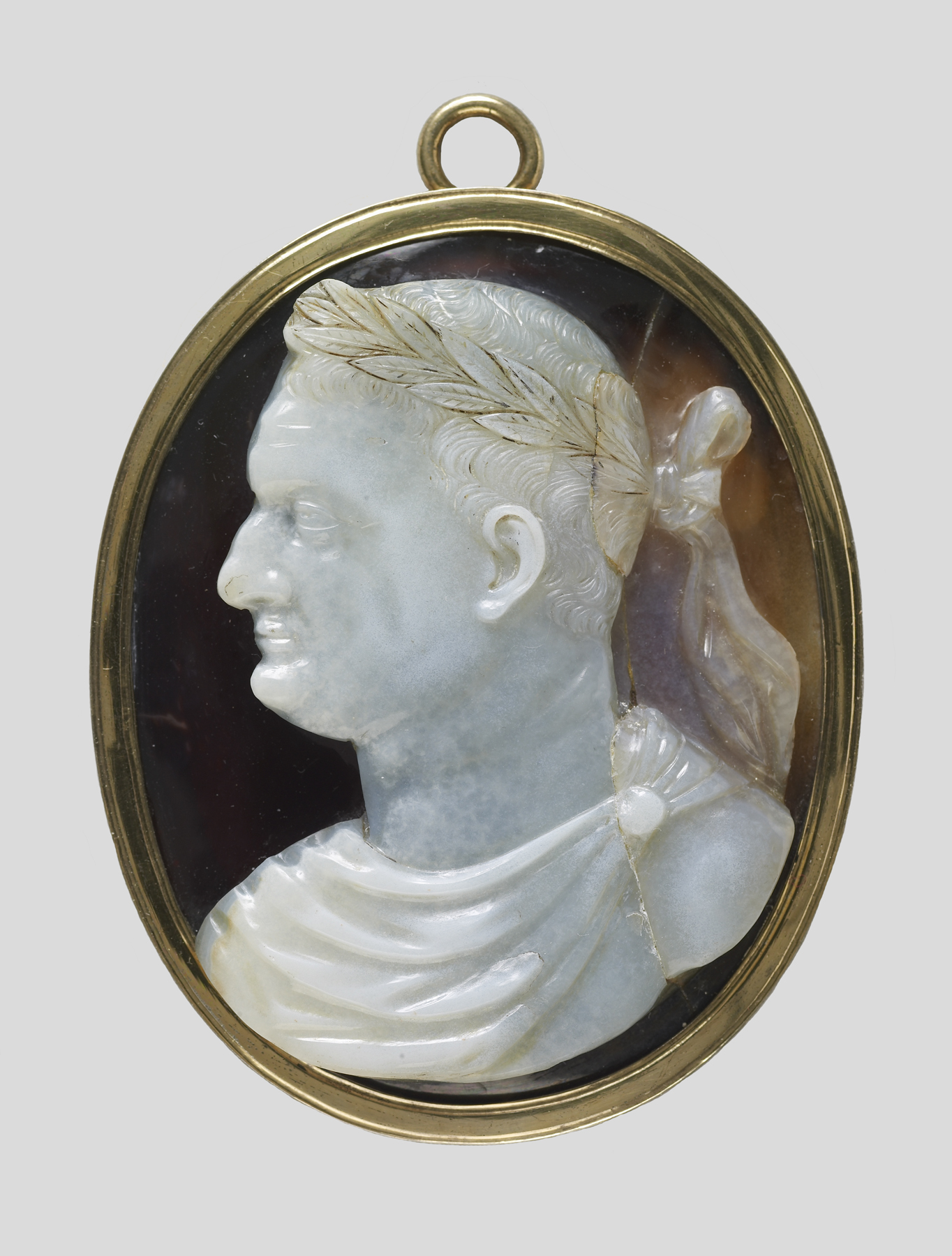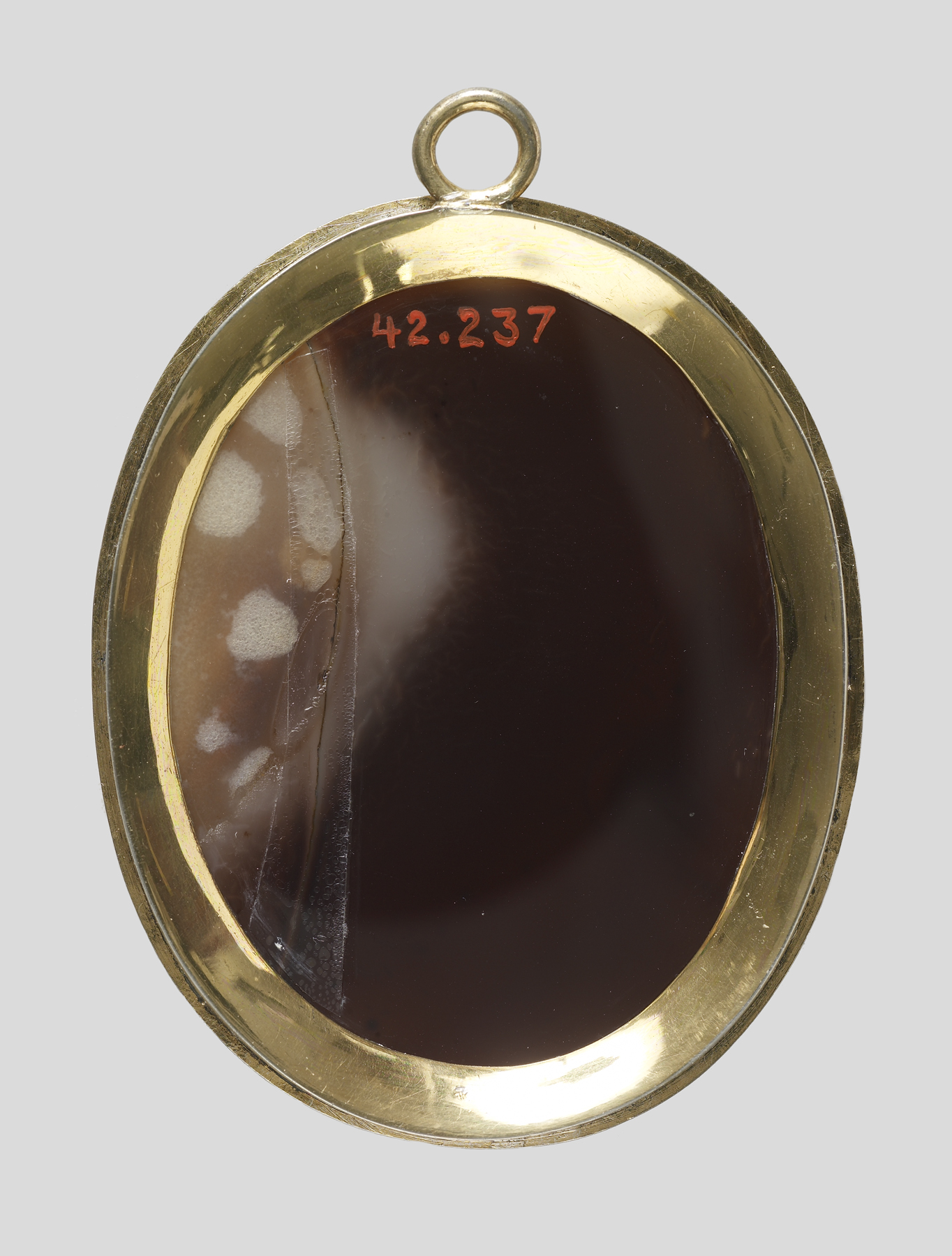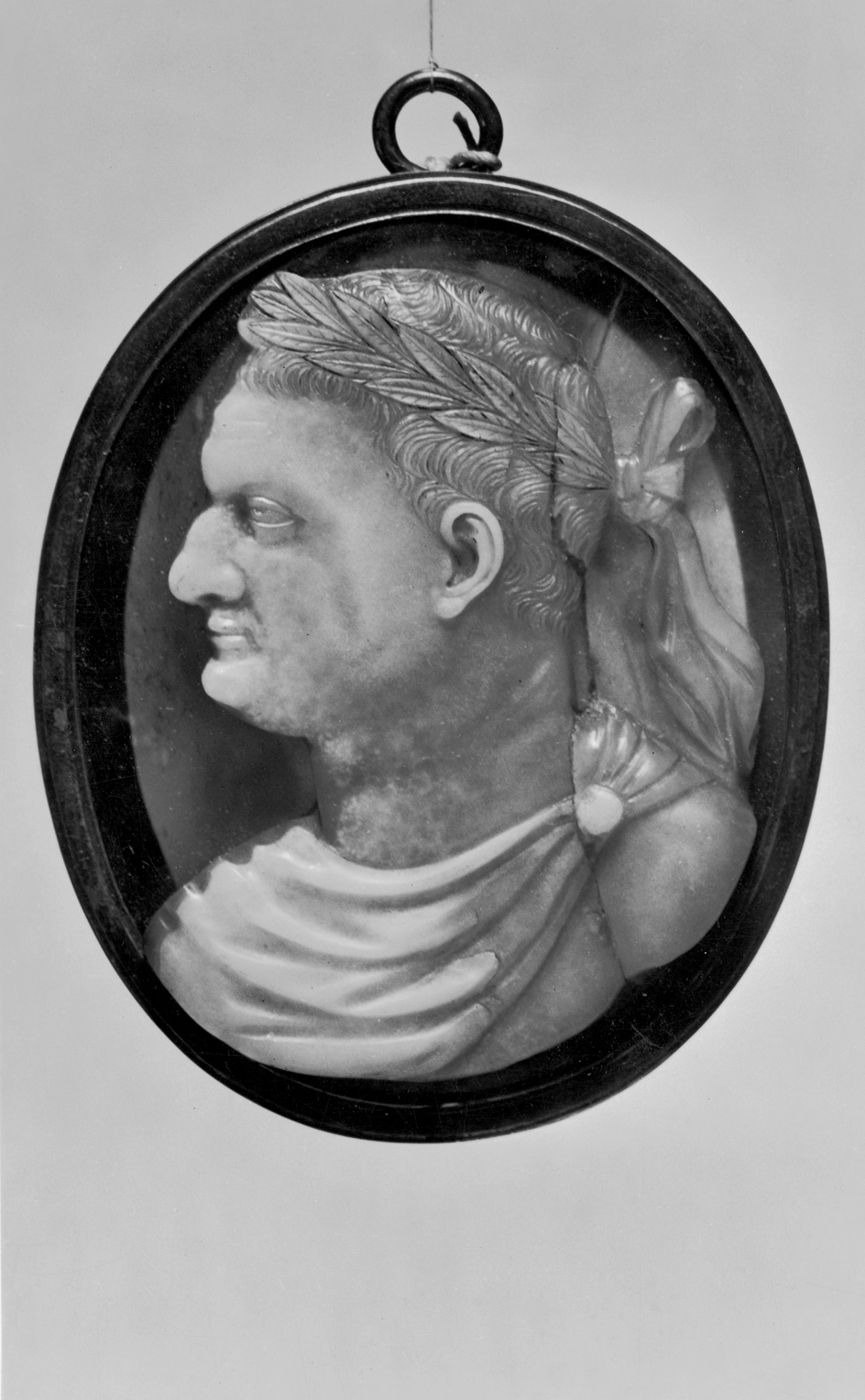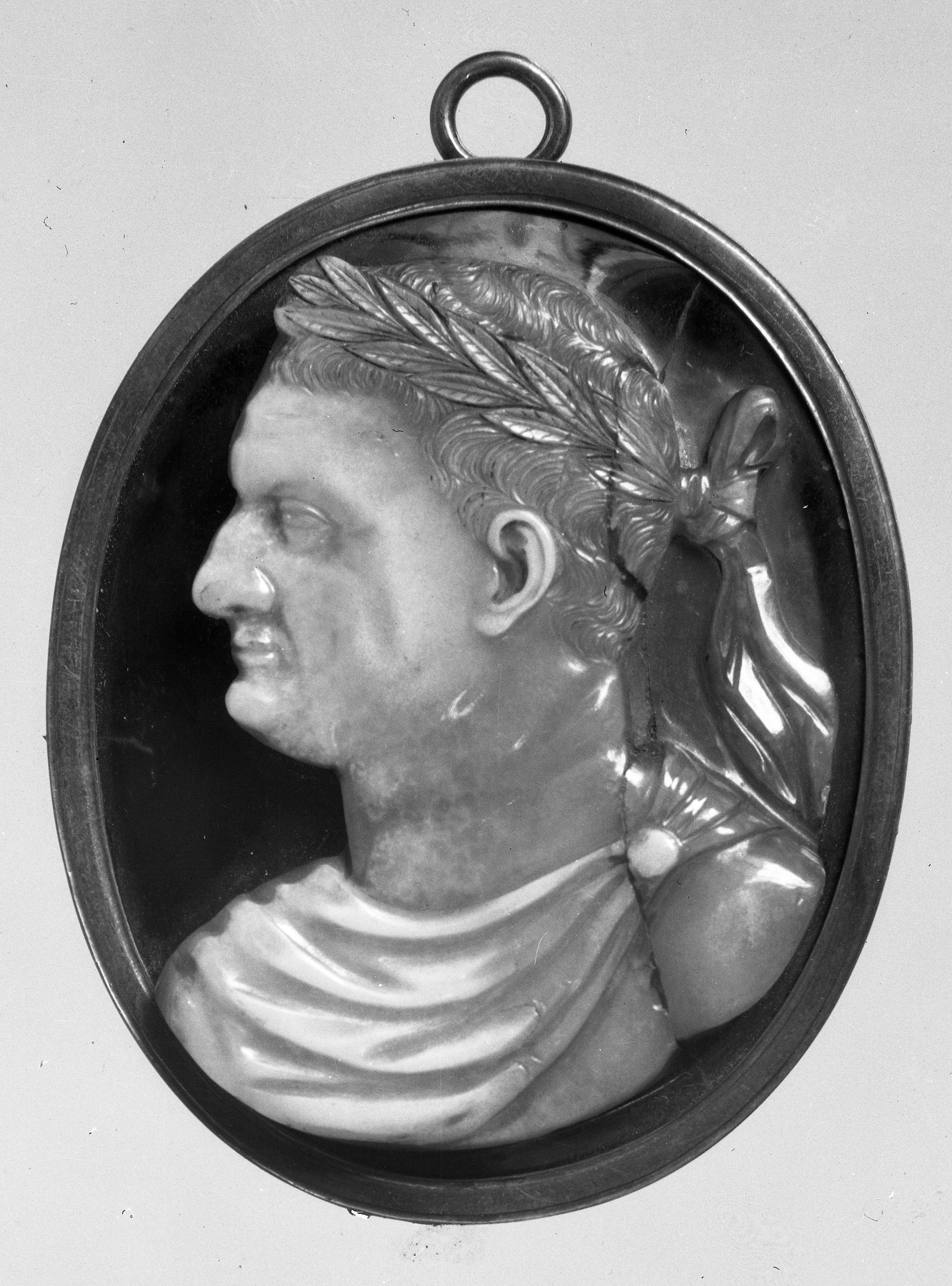"Antique" Cameo with Portrait of the Roman Emperor Vespasian
(Baroque Europe )
The Roman emperors were popular subjects for cameos (small relief carvings) in antiquity, and this cameo of Vespasian (AD 9-79) imitates that tradition. Cameos of the 16th and 17th centuries imitating Roman carving were often offered to collectors as Roman artifacts.
Onyx was favored for cameos because its narrow veins of brown and white color can be carved to set off a white form against a brown background.
Provenance
Provenance (from the French provenir, 'to come from/forth') is the chronology of the ownership, custody, or location of a historical object. Learn more about provenance at the Walters.
C.T. Hawkins [date and mode of acquisition unknown]; Charles Newton-Robinson Sale, London, June 22, 1909, no. 114; Dikran Kelekian, Paris and New York [date and mode of acquisition unknown]; Henry Walters, Baltimore, 1909, by purchase; Walters Art Museum, 1931, by bequest.
Exhibitions
| 2015 | From Rubens to the Grand Tour. Academy Art Museum, Easton. |
| 1971-1972 | World of Wonder. The Walters Art Gallery, Baltimore. |
Conservation
| Date | Description | Narrative |
|---|---|---|
| 1/15/2015 | Treatment | Cleaned for loan |
| 1/15/2015 | Treatment | The frame was polished and coated. The crack in the cameo was reinforced from the reverse for travel. |
Geographies
Italy (Place of Origin)
Measurements
H: 3 7/16 x W: 2 13/16 in. (8.8 x 7.1 cm)
Credit Line
Acquired by Henry Walters, 1909
Location in Museum
Accession Number
In libraries, galleries, museums, and archives, an accession number is a unique identifier assigned to each object in the collection.
In libraries, galleries, museums, and archives, an accession number is a unique identifier assigned to each object in the collection.
42.237








